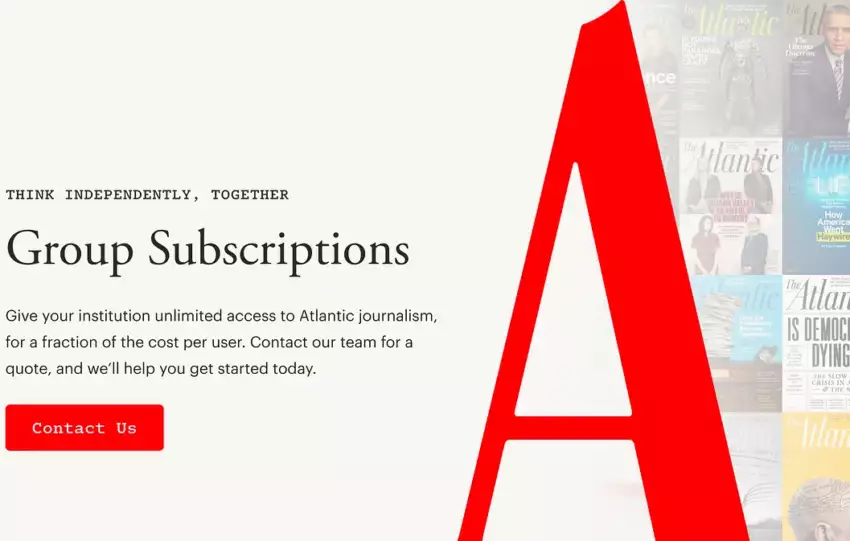Through dynamic pricing strategies, health score-based assessments and personalized retention tactics, Hearst US optimizes subscriber experiences at every touchpoint. By meticulously measuring success metrics and embracing continuous innovation, Hearst US sets the standard for leveraging data-driven insights to foster long-term customer loyalty and mitigate churn in the digital subscription landscape.
We met with Kelli Dakake, VP, Engagement & Retention at HNP to learn more about how Hearst US revolutionized customer engagement with a groundbreaking 75-variable subscriber scoring system.
Good morning, Kelli. Thank you for taking the time to speak with us today. To begin, could you provide an overview of your role and responsibilities at Hearst US?

Kelli Dakake: Certainly. I oversee the customer journey from lead generation to engagement and retention, specifically focusing on non-subscribers and subscribers alike. My team works to create habits for customers and increase their engagement across various platforms, while also implementing strategies to prevent churn.
That sounds like a multifaceted role. What would you say are your primary key performance indicators (KPIs)?
My main KPI revolves around retention and engagement. We're constantly striving to keep our customers engaged and satisfied to minimize churn.
Your work on dynamic pricing is quite intriguing, especially considering its relatively novel application in Europe. Could you elaborate on how you've implemented segmented pricing strategies in your organization?
Absolutely. We utilize dynamic pricing across three main points:
- Segmented pricing at the point of acquisition
- Subscriber health score-based pricing
- Tailored pricing for more tenured subscribers.
Each strategy aims to optimize pricing for different segments of our customer base, enhancing both acquisition and retention efforts.
It's fascinating to see how data-driven approaches like dynamic pricing can impact customer behavior. Could you explain more about your subscriber health score and how it influences your pricing strategies?
The subscriber health score is a machine-learning model developed in collaboration with Mather Economics and our in-house data science team. It evaluates various transactional and behavioral variables to assess the loyalty as well as churn levels of subscribers. We decided 75 variables to build it, each of them having a more a less strong impact on the final score.
The main ones are:
| Variable | Increase or decrease Churn |
| Web visits frequency | Decrease churn |
| E-edition visits | Decrease churn |
| Newsletter signups | Decrease churn |
| In intro period | Increase churn |
| Newsletter sent | Decrease churn |
| Newsletter clicks | Decrease churn |
| Web scroll depth | Increase churn |
| App visits | Decrease churn |
| Multi device Flag | Decrease churn |
| Primary device Mobile | Increase churn |
| … |
Based on this score, we adjust pricing to incentivize retention and prevent churn.
> To read next: determining the optimal price for your subscription product
How do you tailor your engagement and retention strategies for different segments of your customer base?
We categorize our subscribers into low-risk, medium-risk, and loyal segments based on their health scores.
Each segment receives tailored communication and pricing strategies. For example, we've found that highly loyal customers may prefer minimal communication to maintain their routine, while at-risk customers may benefit from targeted engagement efforts.
Another example: after 6 to 9 months of subscription, we price subscribers based on their current rate as well as their subscriber score.
You mentioned using dynamic pricing across three main points: segmented pricing at the point of acquisition, subscriber health score-based pricing, and tailored pricing for more tenured subscribers. Could you walk us through how each of these strategies works in practice?
Segmented pricing at the point of acquisition involves customizing initial offers based on factors such as geolocation and engagement levels. For example, a potential subscriber who has shown high engagement with our content might receive a more premium offer compared to someone who has shown less interest.
The subscriber health score-based pricing is a bit more nuanced. This score is derived from a machine learning model that analyzes various variables, such as frequency of engagement, platform usage, and response to pricing changes. Based on this score, we determine whether a subscriber is at low, medium, or high risk of churning. If a subscriber is deemed high-risk, we may offer them a discounted rate to encourage retention.
Finally, our tailored pricing for more tenured subscribers involves adjusting subscription rates based on loyalty and engagement levels.
> To add to your reading list: From newsletters to predicting possible cancellation: tactics to reduce churn from The Audiencers' Festival Madrid
Could you provide an example of how you've used dynamic pricing to prevent churn among your subscribers?
Of course. Let's say we identify a subscriber with a high risk of churn based on their health score. Instead of waiting for them to cancel their subscription, we proactively offer them a discounted rate or a special promotion to encourage them to stay. By adjusting pricing dynamically based on their likelihood of churning, we can effectively reduce churn rates and retain more subscribers over time.
It sounds like you're leveraging data in innovative ways to optimize both acquisition and retention efforts. How do you measure the success of these dynamic pricing strategies?
Our success metrics vary depending on the specific strategy, but we primarily look at metrics such as churn rate, subscriber retention, and revenue growth. For example, if we see a significant decrease in churn rates among high-risk subscribers after implementing dynamic pricing, we consider that a success. Similarly, if we observe an increase in subscriber engagement and revenue following targeted pricing adjustments, we know we're on the right track.
That personalized approach seems crucial for maintaining customer satisfaction. Are there any new projects or initiatives on the horizon for your team?
We're constantly exploring new strategies to enhance customer engagement and retention. Currently, we're focusing on refining our segmentation models and further integrating subscriber health score into our strategies. Additionally, we're exploring opportunities to leverage machine learning for propensity scoring to predict customer behavior more accurately.




